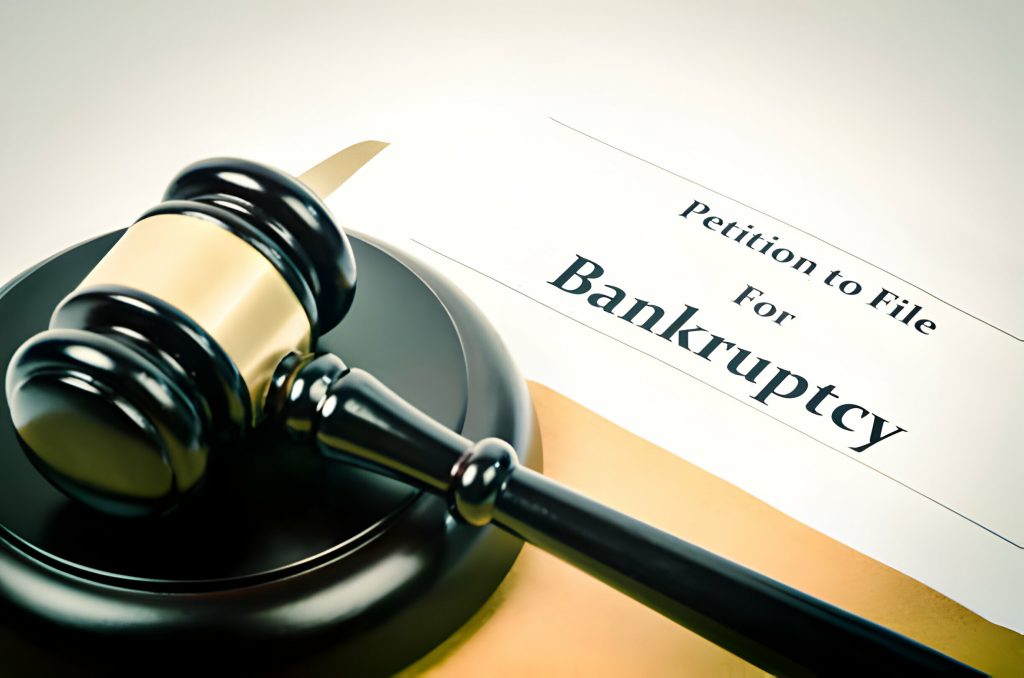Did you know that when you declare bankruptcy, your bank account is often frozen? Regardless of whether you owe any money to the bank, they’ll review your account and might even choose to close it. But don’t worry! There are options available for you to still have a bank account during and after bankruptcy. In this article, we’ll explore how you can open a new account before declaring bankruptcy and reestablish a current account once you’ve been discharged. Plus, we’ll discuss alternatives if traditional bank accounts aren’t accessible to you. So let’s dive in and find out what your options are after bankruptcy!
The Process of Freezing and Closure of Bank Accounts During Bankruptcy
If you go bankrupt, your bank account will be frozen by the bank and may be closed after a few days of review by the Official Receiver. This freezing of your account has several implications. Firstly, it can have a significant impact on your credit rating, making it more challenging to obtain loans or credit in the future. Secondly, it is crucial to engage in financial planning post-bankruptcy to ensure that you can manage your finances effectively. Additionally, if you have joint bank accounts, they will also be frozen during bankruptcy. The decision regarding these accounts lies with the bank and the Official Receiver may play a role in influencing their decisions. Lastly, when managing surplus funds in a new bank account after bankruptcy, it is essential to inform the Official Receiver about any excess money beyond reasonable living expenses as they may claim some or all of these funds towards paying creditors.
Options for Bank Accounts During and After Bankruptcy
During and after bankruptcy, you have several options for accessing banking services. Here are five things to consider:
- Impact on credit rating: Bankruptcy can negatively affect your credit rating, making it harder to obtain loans or other forms of credit. It’s important to understand the impact on your financial reputation and take steps to rebuild your creditworthiness.
- Managing finances post bankruptcy: After bankruptcy, it’s crucial to reassess your financial situation and create a plan for managing your money effectively. This may include budgeting, tracking expenses, and prioritizing debt repayment.
- Potential consequences of undisclosed funds: If you fail to disclose any significant amount of money in your bank account during bankruptcy proceedings, there may be serious legal repercussions. It is essential to be transparent about all your assets and avoid potential consequences.
- Exploring alternative banking options: If traditional banks refuse to open an account for you due to bankruptcy, there are alternatives available such as basic bank accounts, credit unions, or prepaid debit cards. These options may provide similar services but with certain limitations.
- Importance of seeking professional advice: Navigating the complexities of bankruptcy requires expert guidance. Seeking professional advice from a financial advisor or bankruptcy attorney can help you make informed decisions and ensure a smoother transition towards financial stability.
Opening a New Bank Account Before Declaring Bankruptcy
It is advisable to open a new bank account before declaring bankruptcy. This will help you minimize the impact of a frozen bank account during bankruptcy and ensure that your finances are in order. By opening a new account, you can continue managing your income and bill payments without any disruptions. Additionally, it is important to explore alternative banking options for individuals with bankruptcies. One option to consider is using a prepaid card after bankruptcy. While there are pros and cons associated with prepaid cards, they can be a useful tool for managing your finances post-bankruptcy. Another step to take is comparing basic bank account options offered by different banks. This will allow you to find the best account that suits your needs while you wait to be discharged from bankruptcy. Finally, it’s crucial to manage your finances carefully during this time and seek professional advice if needed.
| Pros of Using Prepaid Card After Bankruptcy | Cons of Using Prepaid Card After Bankruptcy |
|---|---|
| No credit check required | Monthly fees may apply |
| Can be used like a debit card | Limited acceptance at some merchants |
| Helps control spending | May not offer all features of traditional bank accounts |
Taking these steps and exploring alternative banking options can help you navigate the challenges of managing your finances during and after bankruptcy.
Opening a New Bank Account After Bankruptcy
When opening a new account after bankruptcy, make sure to choose a bank that is willing to work with individuals who have been discharged from bankruptcy. Here are some key considerations and options to keep in mind:
- Benefits and limitations of post-bankruptcy basic bank accounts
- The role of credit unions in providing banking services post-bankruptcy
- Comparing the costs and benefits of different prepaid card accounts for bankrupt individuals
- Strategies for rebuilding creditworthiness after bankruptcy
- Understanding the impact of bankruptcy on savings and pensions and planning accordingly.
Reestablishing a Current Account After Bankruptcy
To reestablish a current account after bankruptcy, consider applying for a new bank or building society account once you have been discharged. It is crucial to take steps towards rebuilding your credit and managing your finances effectively. Bankruptcy can have a negative impact on your credit rating, making it harder to obtain loans or other forms of credit. Therefore, it is essential to engage in financial planning and seek professional advice to navigate the post-bankruptcy situation successfully. Developing a solid financial plan and regularly reviewing and evaluating your financial situation will help ensure stability and progress. By responsibly managing your finances and seeking professional guidance, you can work towards improving your creditworthiness over time. Remember that rebuilding credit takes time and patience, but with the right strategies in place, you can regain control of your financial future.
Alternatives to High Street Bank Accounts While Bankrupt
Consider exploring alternative options for managing your finances during bankruptcy, such as prepaid card accounts or Post Office card accounts. These alternatives can provide some financial flexibility while you navigate through the bankruptcy process. Here are some key points to keep in mind:
- Post Office card account: If your income is from benefits or a state pension, you can open a Post Office card account. While it’s free to open, it cannot be used for wages or other income sources and has limitations on bill payments.
- Prepaid card accounts: Undischarged bankrupts can use prepaid card accounts, but they may come with monthly fees and charges for adding or withdrawing money.
- Informing the official receiver: Generally, there is no requirement to inform the official receiver about a new bank account opened after bankruptcy unless specifically requested.
- Bankruptcy eligibility: Before making any decisions, it’s crucial to assess if bankruptcy is the best option for you by using a free eligibility check tool.
- Basic bank accounts: Once discharged from bankruptcy, most high street banks offer basic bank accounts that provide essential banking services without credit facilities.
Exploring these alternative options can help you manage your finances effectively during and after bankruptcy.
Accessing and Opening Bank Accounts After Bankruptcy
If you open a new account after bankruptcy, make sure to start using it as soon as the bank opens it. This is because the impact on your credit rating can be significant after bankruptcy, and actively managing your debts is crucial for rebuilding your financial status. The official receiver plays a role in freezing and closing bank accounts during bankruptcy, so understanding their involvement is important. When it comes to joint bank accounts, consider discussing with the bank whether they will close the account or remove your name from it. Additionally, keep in mind that opening a new account after bankruptcy may have financial implications and could affect your ability to obtain certain types of accounts or credit facilities.





